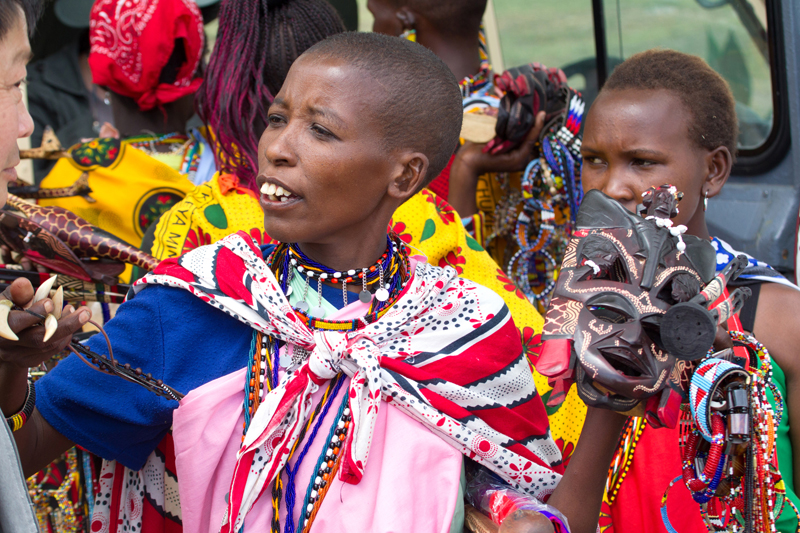
Discover the most favorable seasons for safaris and tours.
What is the optimal time to visit Tanzania? Discover the most favorable seasons for safaris and tours.
Exploring the complexities of Tanzania’s diverse seasons, each of which provides distinctive wildlife spectacles and captivating experiences, is essential for determining the optimal time to visit. The dry season, which spans from late June to October, is the optimal time to experience an extraordinary Tanzanian safari.
The Serengeti National Park is the site of the mesmerizing migration of wildebeests, which commences in June and July, marking the beginning of the arid season. The northern Serengeti is transformed into a stage for the breathtaking sight of wildebeests traversing the river as August and September progress.
An intriguing interlude takes place during the shortened dry season from January to February, which emphasizes the importance of calving. Predators such as lions, leopards, and cheetahs pursue vulnerable calves as prey during this period, which is distinguished by reduced rainfall. As a result, this location is the most advantageous for observing predators in the Serengeti.
Tanzania becomes a sanctuary for migratory birds from November to May, providing observers with an enriching experience. It is January that is particularly noteworthy for birding devotees, as the arrival of migratory birds commences.
The northern circuit remains alluring throughout the year, despite the fact that the wildebeest migration is most prominent in June and July. It is recommended that you schedule your visit for June and July in order to increase your chances of witnessing this epic migration.
In the dry season, wildlife becomes more visible in the vicinity of major water bodies, which forces animals to travel longer distances in quest of water as the park’s pools dry up.
The dry season, which extends from June to October, is the most favorable time to undertake the ascent of Mt. Kilimanjaro, in addition to your safari expedition.
The Most Optimal Time to Visit Tanzania: A Guide to the East African Gem
Tanzania, one of the most distinguished nations in East Africa, is renowned for its extensive tourism offerings, particularly in the game parks. Tanzania is a country that welcomes visitors year-round; however, the arid season is the most suitable time to visit.
Wildlife observation is significantly enhanced during the dry season. Animals are compelled to traverse the park in quest of water and pasture as the grass dries up and water holes diminish. The concentration of animals around water holes is a notable feature for animal viewing, as predators frequently loiter in anticipation along the riverbanks.
Tanzania’s national parks are open year-round, but the overall experience is improved by comprehending the subtleties of each season, which guarantees that planned activities are conducted without any inconvenience.
Birding and Wildlife Extravaganza in Tanzania
Tanzania is renowned for its extraordinary wildebeest migration and the profusion of wildlife that inhabits its parks. In June and July, the Serengeti is the site of the iconic migration, which is accompanied by a substantial wildebeest population in the Ngorongoro Crater. Lions, leopards, hyenas, zebras, giraffes, impalas, hippos, crocodiles, chimpanzees, cheetahs, African wild dogs, serval cats, and an impressive 1114 avian species, including the striking flamingos, are among the captivating species that inhabit the parks.
Tanzania is home to more than 1000 avian species, with approximately 800 residents and 200 migrants. Forty-four of these species are incidental, while thirty are endemic. From November to April, Tanzania’s skies are adorned by migratory birds from Europe and North Africa, making this period an ideal time for birding devotees. Tanzania’s national parks are a year-round wildlife destination due to the presence of a diverse array of bird species, including ostriches, flamingos, guinea fowl, shoebill storks, turacos, hammerkops, egrets, kingfishers, African barbets, ashy sterlings, hartlaub’s turacos, black crakes, and kilombero weavers.
Safety for Discerning Tourists in Tanzania
Tanzania is a secure destination for travelers, and this security is further bolstered by the organization of safaris by reputable companies. Although there have been reports of armed robbery and luggage snatching, it is advisable to exercise caution, particularly during nighttime travel. The risk of theft is reduced by avoiding the carrying of large sums of currency and ensuring the security of valuables. It is advisable to refrain from carrying the passport with you at all times; for the majority of excursions, a copy of the Identity Card will suffice. It is imperative to exercise caution when utilizing public transportation.
In summary, Tanzania’s diversified landscapes, abundant wildlife, and gracious hospitality captivate visitors. Tanzania is a year-round sanctuary for discerning travelers seeking an authentic African safari experience, whether they are reveling in the spectacle of the great migration or immersing themselves in birdwatching delights.


